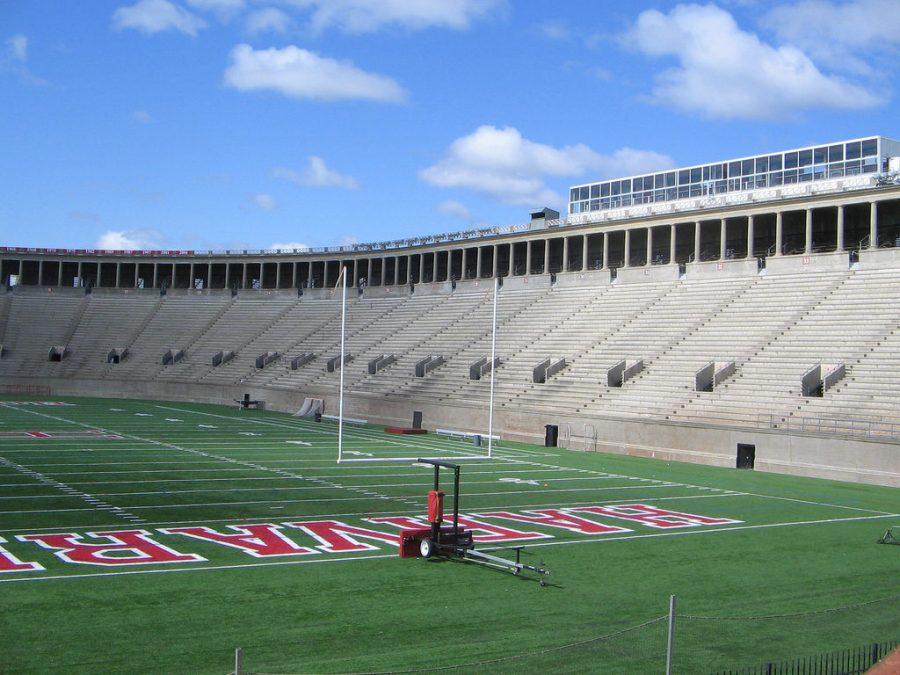Sometimes it’s hard to believe that college football exists north of the Mason-Dixon Line. Most daily CFB news comes from the south, with the Southeastern, Atlantic Coast, and Big 12 conferences providing the loudest analysis. Their overbearing presence is warranted, though. These three power-conferences have produced every Heisman trophy winner since 2007, and the last time a team outside of the south captured a national championship was 2004, when the University of Southern California beat Oklahoma, 55-19.
In just over a month, college football’s best rivalry will renew in Boston. No southern teams will be present and the size of the camera crews will pale in comparison to some of the other games taking place on that late November afternoon. But when Yale travels to Harvard to take on the Crimson for the 131st meeting of the rivalry so prominent that it adopted the name “The Game,” there will be no shortage of enthusiasm over the history and hatred between the two Ivy League schools.
Only two rivalries — Lehigh-Lafayette and Princeton-Yale, who have played 148 and 135 times, respectively — have been played more times than the Crimson and Bulldogs. Harvard won the first-ever meeting on Nov. 13, 1875, beating Yale 4-0 in front of 2,500 wealthy fans able to pay the 50-cent cost of admittance.
Since 1898, Harvard-Yale has represented the final game of each team’s season all but one time, with many of the games producing the league champion. The only exception came in 1920, when the Crimson earned a 7-6 victory over Oregon in the Rose Bowl.
With its annual appearance on the teams’ schedules as certain as midterm exams, it’s no wonder “The Game” has become one of the most competitive rivalries in football. When the two teams meet on Nov. 22, for this year’s installment, the Bulldogs will enter with a 65-57-8 lead in the series. Of the eight ties between the schools separated by 132 miles, none was more dramatic than 1968 — “When Harvard beat Yale 29-29.”
Yale entered the 1968 meeting as heavy favorites after winning its previous 16 games. At halftime, the Bulldogs appeared to be on their way to another win over their hated rival, as they took a 22-0 lead to the locker room. The Crimson didn’t quit, though. Led by an all-star offensive line which included Al Gore’s then-roommate and future Academy Award winner, Tommy Lee Jones, Harvard came storming back. In front of 40,280 spectators, the Crimson rallied to score two touchdowns in the final 42 seconds to tie it at 29 apiece.
As with any good rivalry, Harvard-Yale has stirred controversy from its inception. When the two prestigious institutions first met in 1875 — 20 years before the forward pass was formally introduced to the sport — both teams had to agree on a set of rules prior to kickoff. It took strong convincing from Harvard to sway the Bulldogs to allow either team to run with the ball, a monumental moment in football history which no other rivalry can claim.
Similar to the ACC or SEC rivalries of today, “The Game” has always been fueled by aggression. In fact, the rivalry was put on hold for three years, after nine players left the 1894 matchup due to either injury or ejection. Charles Eliot, who served as Harvard president at the time, was so concerned by the bloodshed of 1894 that he suggested the school’s football program be terminated altogether. Supporters of “The Game” couldn’t be wavered, however, as Harvard and Yale renewed their rivalry in 1897.
Not all of the hatred was sparked by the players. Over the years, alumni from each school have used the rivalry as the perfect opportunity to prank their Ivy League foe. The most famous prank came in the 121st edition of “The Game” at Harvard Stadium in 2004, when two Yale alums handed hundreds of Crimson fans maroon and white signs as they entered the gates. When time came for the Harvard fans to hold up their signs in an effort to spell a specific message, Yale fans across the field took delight in reading the Crimson’s fans message declare “We Suck.”
On the field, Harvard and Yale have combined to claim 34 national titles. While the two teams have each had success working as a unit, both have had their fair share of impact players. Yale’s Larry Kelley and Clint Frank became the first players to win the Heisman trophy for the same school in consecutive years when they took it home 1936 and 1937, respectively. Despite their lower-division status, Harvard and Yale have combined to send nearly 60 players to the NFL. Houston Texans quarterback Ryan Fitzpatrick, who entered the NFL in 2005 after a successful career for the Crimson, has had the most renowned career among any of the rivalry’s current professionals.
No rivalry is complete without first class venues to host them. Constructed in 1903, Harvard Stadium is the nation’s oldest stadium with a present-day capacity of 30,323. A little more than a decade after its rival constructed its horseshoe-shaped stadium in Allston, Yale built the Yale Bowl in 1914. With an original capacity of 70,869, the Yale Bowl inspired the design of many historic stadiums, including the Los Angeles Coliseum, the Rose Bowl, and Michigan Stadium.
As college football fans prepare for the first-ever playoff to determine a National Champion, it’s likely that little attention will be directed to Harvard Stadium, where Harvard and Yale will continue the historic rivalry. Although many of the teams in contention for the playoffs will be from the south, football historians should seek out the result of the Ivy League showdown. After all, you never know when Harvard and Yale will have to intervene over the rules of “The Game.”
Harvard-Yale rivalry among the most underrated in sports
October 31, 2014





















































